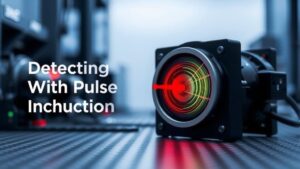Using Tidal Shifts to Reveal Buried Relics in Submerged Areas
Using Tidal Shifts to Reveal Buried Relics in Submerged Areas
Tidal shifts are a natural phenomenon influenced by the gravitational pull of the moon and the sun, resulting in the oscillation of sea levels. While often viewed merely as routine changes in sea and river waters, tidal movements can play a crucial role in the discovery of submerged artifacts and heritage sites. This article delves into how these tides promote archaeological explorations, uncovering buried relics long thought lost to the depths.
The Mechanics of Tides
Understanding tidal shifts is fundamental to grasping their impact on submerged archaeology. Tides can be classified primarily into two types: spring tides and neap tides. Spring tides occur when the sun and moon are aligned, leading to the most significant difference between high and low tides. On the other hand, neap tides arise when the sun and moon are at right angles to each other, resulting in minimal tidal variation.
This cyclical behavior creates opportunities for archaeologists, particularly in coastal and riverine areas where relics may be buried beneath the sediment. As sea levels rise and fall, the shifting currents and erosion can expose previously hidden artifacts.
Case Studies: Successful Discoveries
Numerous examples highlight how tidal shifts have led to significant archaeological finds. A noteworthy instance occurred in the early 2000s at the site of the ancient port of Portus near Rome, Italy. Erosion caused by tidal changes revealed remnants of warehouses and storage facilities integral to understanding Roman maritime trade. As these structures were uncovered, researchers were able to reconstruct trade routes and economic practices, offering invaluable insights into ancient societies.
Similarly, in 2020, a team of marine archaeologists discovered shipwreck remnants off the coast of the Florida Keys, uncovered by unusually low tides. The exposure of the wreck allowed for immediate study and recovery of artifacts, shedding light on maritime history during pivotal moments in American history.
Techniques for Discovery
To effectively harness tidal shifts for archaeological exploration, several techniques can be employed:
- Remote Sensing: Technologies such as sonar mapping and magnetometry can reveal anomalies in submerged landscapes that may indicate buried relics.
- Archaeological Diving: Directly exploring these areas as tides recede allows archaeologists to meticulously document and recover findings.
- Anticipatory Planning: Understanding the tidal calendar aids in planning excavation efforts to coincide with optimal low-tide conditions.
Challenges and Considerations
While tidal shifts present opportunities, they also introduce challenges that must be acknowledged:
- Environmental Conditions: Rapid changes in water levels can create hazardous conditions for divers, necessitating robust safety protocols.
- Legal and Ethical Considerations: The discovery of artifacts may lead to disputes regarding ownership and preservation, particularly in sensitive ecological regions.
- Site Preservation: Continuous exposure to shifting tides can also create risks of deterioration for uncovered artifacts, prompting immediate conservation efforts.
The Future of Tidal Archaeology
As advancements in technology and methodology continue to evolve, the field of submerged archaeology stands at the forefront of discovery. Scientists are utilizing more sophisticated remote sensing tools and employing eco-friendly techniques that help mitigate the impact of exploration on underwater ecosystems. Also, collaborations with coastal communities are enhancing the context of findings, integrating local histories and oral traditions into archaeological narratives.
Conclusion: Actionable Takeaways
In summary, tidal shifts offer archaeologists a unique lens through which submerged relics can be revealed and studied, unlocking the narratives of our shared human history. Potential explorers and institutions engaged in underwater archaeology can:
- Monitor local tidal patterns to identify potential archaeological sites.
- Invest in advanced mapping technologies to efficiently uncover submerged relics.
- Engage local governments and communities to ensure ethical practices in excavation and preservation.
By embracing the opportunities presented by tidal movements, researchers can illuminate the past, fostering a deeper understanding of our maritime heritage.



